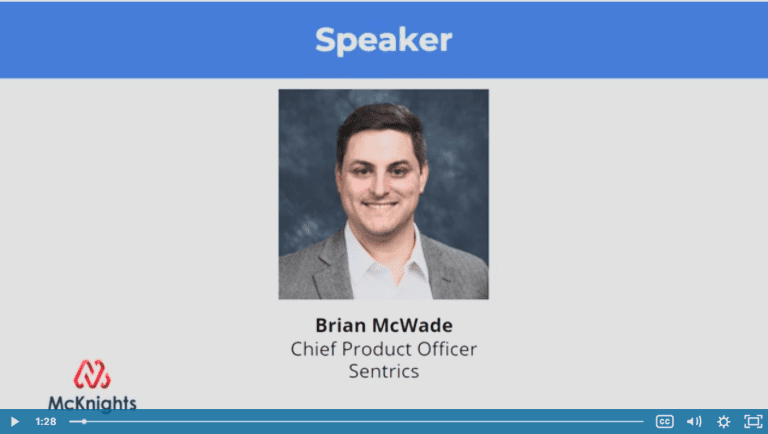This blog is part of the Resident Journey Series. Because the definition of a revolution is “in favor of a new system,” this blog explores how to capture and use the resident journey to drive true resident engagement, satisfaction, and family confidence.
The primary concern for senior living operators has been to keep residents safe by keeping COVID out of their buildings. The impact of keeping friends and families away from residents was a secondary concern. As residents became more isolated, the need for additional strategies to engage and keep residents connected became readily apparent.
Simply asking residents to tune into their television or computer to watch a virtual program with other residents sheltering in place didn’t bring the desired support or foster the relationships operators intended. Now as communities modify shelter in place policies, many are realizing that replacing virtual events with full calendars is no longer enough.
As senior living communities try to boost community confidence and occupancy, showcasing the activities calendar and multi-purpose rooms may not inspire the same confidence in a community’s ability to engage residents that it once did. Rather than keeping them busy, potential residents want to learn how a community will help them continue to grow, maintain independence and build relationships. They want to know that your team will:
- Care enough to want to learn specifically about them
- Commit to asking questions and seeking information continuously throughout their stay, not just an influx of discovery at the onset
- Seek feedback over and over again, even if it is less than desirable
When communities address these needs, they can differentiate themselves and gain new residents, according to experts Bob Kramer of Nexus Insights and Sara Kyle, founder of LE3 Solutions.
Redefine Engagement with Individual Approach
In a McKnight’s Senior Living Webinar, Don’t restart until you reset: Thinking differently about engagement, Kramer and Kyle said it’s time to rethink your community engagement approach. The pandemic revealed that operators need a deeper understanding of the drivers behind individual residents’ feelings of joy, purpose and a willingness to try new things.
True resident engagement should be a personal and intentional journey that keeps current and prospective residents connected and supported wherever they are. That means operators need to better recognize residents as individuals and help them understand what they bring to the community, what they may want to contribute and how to establish and chase after new goals.
Think of it this way, said Kramer: “Put the focus on a resident’s future rather than their past accomplishments. Instead of introducing someone as chief ER nurse for more than 30 years who raised five children,” an aide could say “Meet Dorothy. She’s creating a body of artwork she plans to show soon in our art gallery.”
Operators need to provide personal experiences that help people grow, and tie engagement to a value proposition that shows how a community is different and beneficial. Doing so can help attract new residents.
Create an Engagement Philosophy
To start an engagement revolution, you first need to define your organization’s wellbeing philosophy and the role it plays in supporting and complementing the full journey of a resident. If you haven’t defined the full resident journey, do it next. You will also want to create a picture of your community’s optimal resident wellbeing so you can measure it.
The next step is one of the hardest but most beneficial: Operators need to figure out what their greatest resource – their residents – want. Armed with specific details about individuals, operators can build trust and better support residents. But how and when you ask for feedback is critical.
A Personalized Resident Journey Starts with Information
How do you discover and learn individual details that become the foundation of a personalized resident journey? You need to collect ongoing, interactive data while building resident trust. Ask easy-to-answer questions through a familiar device: the TV. Using a TV to collect information allows you to ask non-intrusive, yet personalized, questions regularly that residents can answer when it’s convenient for them.
These questions don’t start with ADLs, medication lists, former professions, and the number of grandchildren each resident has. Instead, they should focus on learning what’s important to the resident and how you can help them achieve their goals.
Asking simple questions initially can build confidence and trust in the process. Ask a variety of questions to create a true resident profile your whole staff can use, while allowing the residents to share information that helps them too. Gradually ask more personal questions that encourage the resident to share true feelings.
Leverage a Palette to Guide Your Thinking
Use a behavioral health model–like the Vitality Activation Approach–to help assess a resident’s emotional health, gauge the transition from move in through the end of the stay, and nudge and support a move from passive to activated vitality.
The Vitality Activation Approach uses three vitality indicators–growth, independence and relationships–to assess a resident’s overall health and wellbeing and drive content and programming to meet their unique needs.
- Growth. A reason to wake up with a plan for the day
- Independence. Maintaining control over one’s life
- Relationships. Meaningful relationships, both new and curated, inside and outside the community
Redefine the Definition of Programming
The more you know about a resident, the more you can feed them individual programs, or ideas, to help them achieve their personal goals. Include lifestyle assessments and frequent “pulse check” questions to help identify how a resident is settling in at the 30, 60, and 90-day marks. A six-month check-in and an annual survey asked one question at a time, help determine if the resident considers your community home now.
This information will help you shape individual approaches and personalize programs that better appeal to residents. You can push information or recommendations to a resident to encourage them to pursue new goals on their own, remind them of their recent accomplishments, even support them through their transitions.
Leverage Technology to Automate New Processes and Measure Results
It’s important that your new engagement strategy has a repeatable and shareable set of processes. Technology that can help codify your strategy, ask a set of consistent questions, analyze the results, and provide insights that help people make decisions about next steps.
The ideal technology will make this process even easier by feeding content and personalized recommendations to the residents and care partners. It will be available to all staff and family members. It’s not just an activity director’s job to keep residents engaged; everyone contributes. It’s about the maintenance person knowing Dorothy is a Chicago Bulls fan and asking her about last night’s game when they cross paths.
Launch an Engagement Revolution
True resident engagement is not something that can be copied from one community and applied to another—true engagement comes from a deep understanding of your customers—the residents—and interacting with them throughout their stay, not just at designated “activity” times. At this level, engagement is not just a philosophy; it is your culture, one that residents and staff share with others and becomes your differentiator.
Want to learn more about launching an engagement revolution? Listen to the webinar today where Kyle and Kramer defined true resident engagement and introduced a framework for a more expansive engagement strategy.



